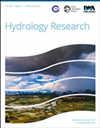Research on the urban water resources carrying capacity by using system dynamics simulation
IF 2.4
4区 环境科学与生态学
Q2 Environmental Science
引用次数: 3
Abstract
The relationship between water resources and the social economy has become a restricting factor for the sustainable development of cities around the world. Based on the urban development demand and water resources condition of Linhai City in eastern China, which has the fastest economic growth and population boom, the system dynamics model of water resources carrying capacity was established to analyze the interaction between society, economy and water resources. According to the different development emphases, six different modes of water resource utilization were designed. Taking total population, GDP, industrial output value, tertiary industry output value, water consumption, water supply and sewage discharge as the measurement indexes, the research predicted the development status of water resources carrying capacity of Linhai City from 2015 to 2030 under different development modes. Through the simulation results, it is found that the water-saving measures can reduce the gap between water supply and demand only in a short term. In the long run, the adjustment of industrial structure can improve the water resources carrying capacity and simultaneously promote the economy. In addition, increasing the water income sources as well as strengthening sewage treatment are also necessary to balance the water supply and demand.基于系统动力学模拟的城市水资源承载力研究
水资源与社会经济的关系已成为制约世界各国城市可持续发展的重要因素。基于经济增长和人口增长最快的中国东部城市临海市的城市发展需求和水资源状况,建立了水资源承载力系统动力学模型,分析了社会、经济和水资源之间的相互作用。根据不同的发展重点,设计了6种不同的水资源利用模式。以人口总数、GDP、工业总产值、第三产业总产值、用水量、供水量和污水排放量为测度指标,预测了2015 - 2030年不同发展模式下临海市水资源承载力的发展状况。通过模拟结果发现,节水措施只能在短期内缩小供水与需求之间的差距。从长远来看,产业结构的调整可以提高水资源承载能力,同时促进经济发展。此外,增加水收入来源和加强污水处理也是平衡水供需的必要条件。
本文章由计算机程序翻译,如有差异,请以英文原文为准。
求助全文
约1分钟内获得全文
求助全文
来源期刊

Hydrology Research
Environmental Science-Water Science and Technology
CiteScore
5.30
自引率
7.40%
发文量
70
审稿时长
17 weeks
期刊介绍:
Hydrology Research provides international coverage on all aspects of hydrology in its widest sense, and welcomes the submission of papers from across the subject. While emphasis is placed on studies of the hydrological cycle, the Journal also covers the physics and chemistry of water. Hydrology Research is intended to be a link between basic hydrological research and the practical application of scientific results within the broad field of water management.
 求助内容:
求助内容: 应助结果提醒方式:
应助结果提醒方式:


